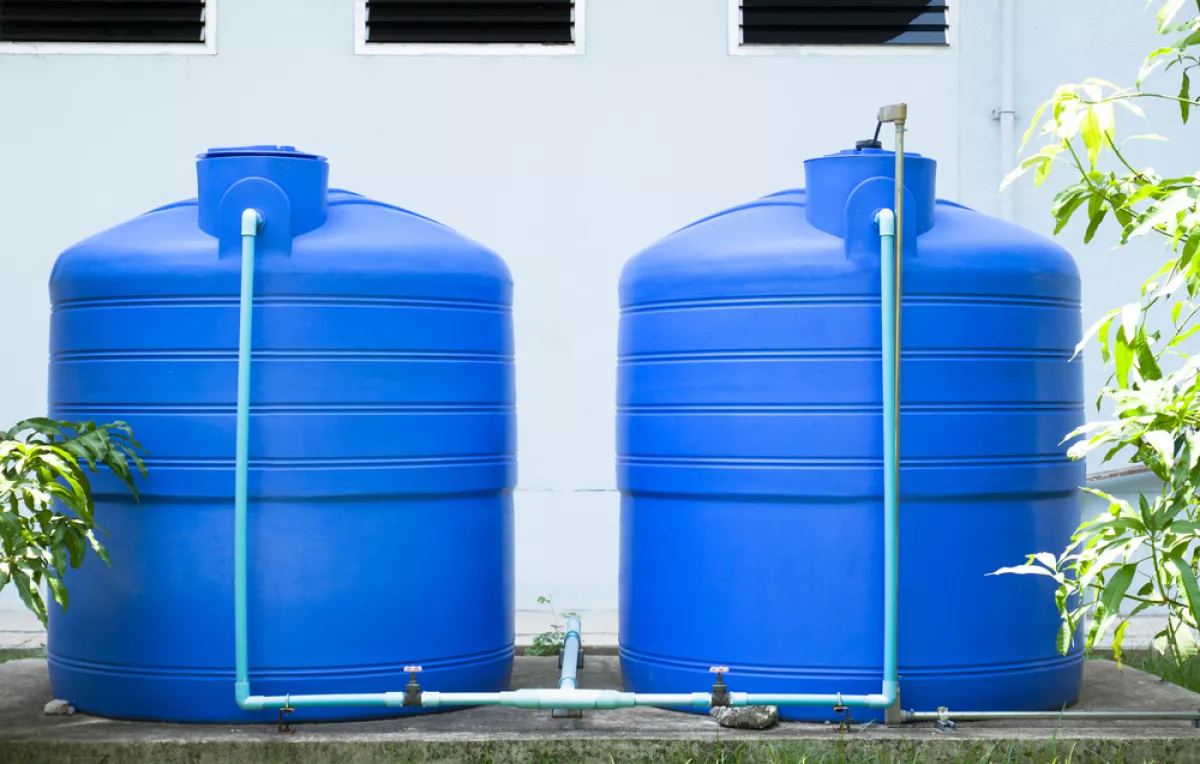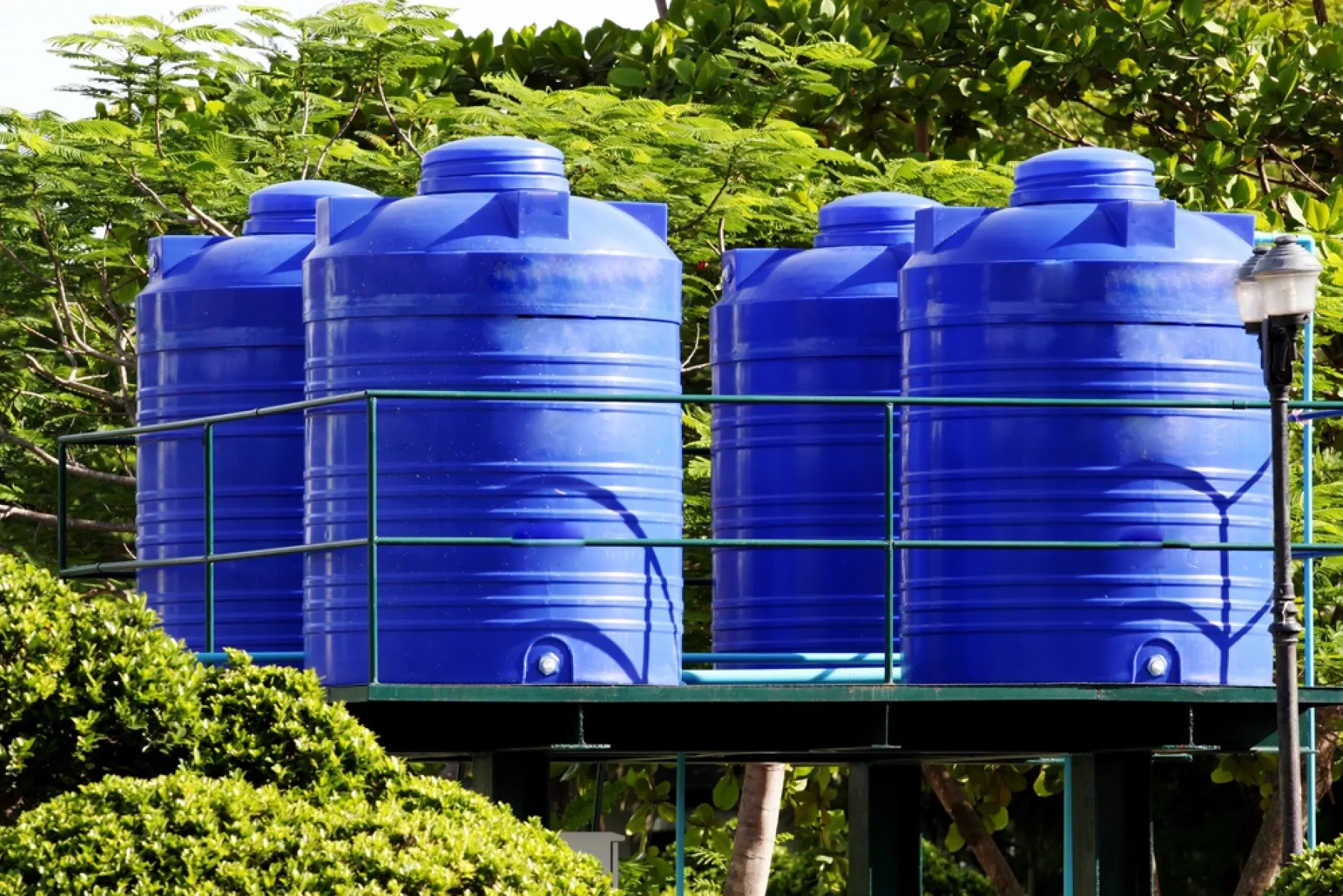The Need for Clean Water Supply
Daily, each human being needs approximately 20 liters of water for basic survival necessities such as drinking and cooking. An additional 50 to 150 liters of water is required for activities such as washing, bathing, laundry, and irrigation.1
In the last century alone, increasing water consumption has been outpacing the rate of population growth. The world’s six billion people are consuming 54% of all the accessible freshwater contained in rivers, lakes and underground aquifers.2
As the global population increases, demand for access to reliable sources of potable water is approaching its limit.
It is reported that one-third of the global population now live in areas of “water stress”, where demand can exceed supply. In addition, increasing pollution from urban, industrial, and agricultural sources is making available resources either unusable or a major health risk.3
Water Tank Design vs. Microbial Contamination
Water storage tanks are commonly used to maintain sufficient, clean water supply for short- or long-term usage.4 Water tank parameters include the general design of the tank, choice of construction materials, and linings. Various materials are used for making water storage tanks including polyethylene, polypropylene, fiberglass, concrete, stone, and steel.5
By design, a water storage tank should do no harm to the water. Water is susceptible to a number of ambient negative influences, including bacteria, algae, changes in pH, and an accumulation of minerals.
The contamination can come from a variety of origins such as piping, tank construction materials, and animal feces. A correctly designed water tank works to address and mitigate these negative effects.
It is imperative that water tanks be cleaned annually to preclude delivery of algae, bacteria and viruses to people or animals.5
Safe drinking water is defined as water with microbial, chemical and physical characteristics that meet World Health Organization (WHO) guidelines. Even for those people who have access to clean water, the provision is irregular where piped water supply operates sporadically.
Safe household water storage is a critical component of a Household Water Treatment and Safe Storage (HWTS) system. This system is being promoted by WHO worldwide in areas that do not have piped drinking water.2
Water storage tanks can have their own impact on quality of water if they are not handled hygienically. Common problems in water storage tanks and reservoirs include loss of disinfectant residual, bacteria re-growth, and excessive detention time.4
Sometimes, due to cleaning lapses and long duration of storage, the water gets contaminated with microbes. Additionally, even the surface of water storage containers can become contaminated as microbes attack the structural material. This causes contamination of even fresh potable water which comes after the old contaminated water is removed.
There are multiple ways to prevent product deterioration, odors and stains caused by the growth of microbes on water storage tanks. The first step should always be to clean surfaces with approved disinfectant materials that kill microbes.
In addition, embedded antimicrobials can provide an added line of defence against microbial degradation.

The Benefits of Integrated Antimicrobial Product Protection for Water Storage Tanks
Water storage tanks often perform as expected to store water for future access and use. However, there can be lapses that result in conditions which support to microbial attachment, survival, and growth. These include:
- Environmental conditions and practices by personnel that can leave tank surfaces with higher than expected microbial loads.
- Over time, the materials of the water tank begin to age and are no longer effective in maintaining surface cleanliness.
Under these conditions, the presence of another level of clean to support existing regulations, procedures, and protocols is valuable.
Microban® antimicrobial product protection can be incorporated into plastic water storage tanks at the point of manufacture. The technology remains active 24/7, working to inhibit microbial growth on the surface of the tank and extend its life expectancy. Take a look at the antimicrobial water storage tanks offered by Vectus to learn how they have launched their product in the marketplace.
The antimicrobial effect is certified with ISO 22196-2011. This proven antibacterial test method has shown the antibacterial efficacy of Microban®-treated products to be >99% for Escherichia coli (ATCC #8739), Salmonella enterica (ATCC #10708), and many other strains of bacteria.
Microban® antimicrobial technologies have undergone extensive independent laboratory testing and have a long history of safe use. The biocidal active components of Microban® antimicrobial technologies are notified with the EU Biocidal Products Regulation (BPR) and registered with the US Environmental Protection Agency (EPA).
Selected Microban® technologies also have the added benefit of being approved for use in food-contact applications by the FDA and EFSA.
Antimicrobial Solutions for Plastic & Metal Water Storage Tanks
Roto-moulded, or extrusion blow moulded water tanks can be easily treated with either powder or thermoplastic masterbatch antimicrobial solutions, depending on the capabilities of the production facility.
It is not uncommon for manufacturers to pre-compound and grind their own roto-moulding resins prior to the manufacture of the tank. Both powder and masterbatch systems can be employed.
Due to a vitreous enamel coating, water tanks made from steel or fibreglass can be slightly more complex to treat. The firing temperature used to form the enamel coating challenges traditional antimicrobial chemistries, meaning many treatments can prove unsuccessful.
Microban patented ceramic technologies overcome this with synergistic elements. Treatment is typically achieved by adding the specialist formulation to the enamel frit prior to application and kiln firing. This enhances durability and becomes an intrinsic part of the enamel coating.
Conclusion
Some microbes can replicate rapidly on products and surfaces. When unhindered, bacteria can double their population in 20 minutes, resulting in staining, bad odors and premature product degradation.
Plastic water storage tanks with built-in Microban® antimicrobial technology will continuously challenge microbial survival. This enhancement renders the treated tank cleaner, fresher and more durable to use than a tank without built-in antimicrobial protection.
Beyond the Tank: Antimicrobial Piping, Pumps and Filtration Systems
Microban® technology can also be incorporated into plastic piping, water pumps, and filtration systems, helping to achieve more hygienic built environments.
If you manufacture water storage tanks and are looking for ways to address the effects of microbial growth, contact a member of the Microban® team today.
References:
- Amiri, A. H., Alkendi, R. R., and Ahmed, Y.T. (2013) Quantification of Bacteria in Domestic Water Storage Tanks in Sharjah. Journal of Water Resources and Ocean Science. 2 (5): 125-132.
- Chalchisa, D., Megersa, M., and Beyene, A. (2017) Assessment of the quality of drinking water in storage tanks and its implication on the safety of urban water supply in developing countries. Environ Syst Res 6:12.
- Blacksmith Institute. (2012). Contamination surface water. New York, NY 10035 USA.
- Duer, M. J. (2006) The science of mixing and improving water quality in water storage tanks. http://waterworld.com/content/ww/en/whitepapers/. Accessed January 31, 2019.
- Association, American Water Works. "About Us - American Water Works Association". www.awwa.org.


